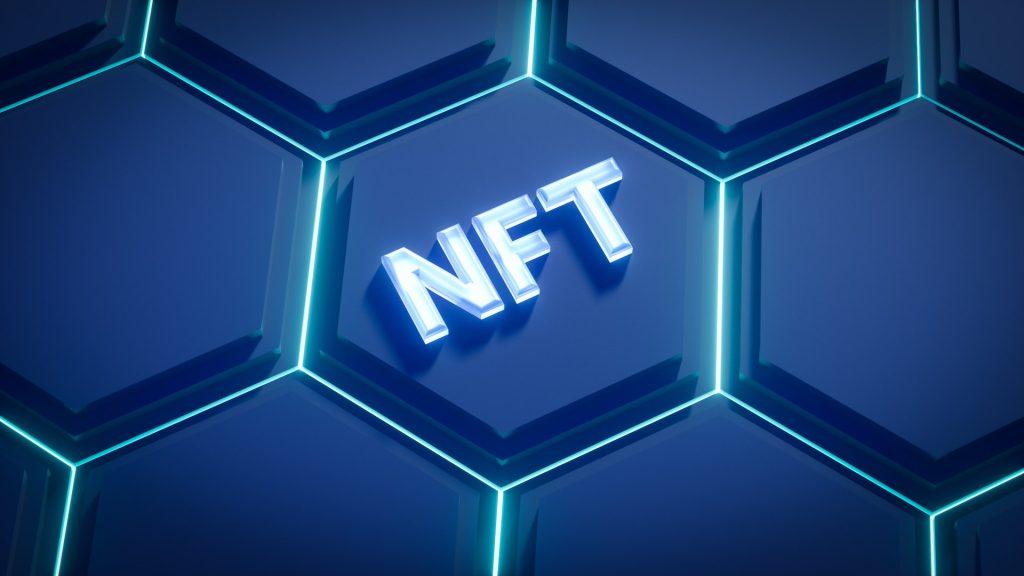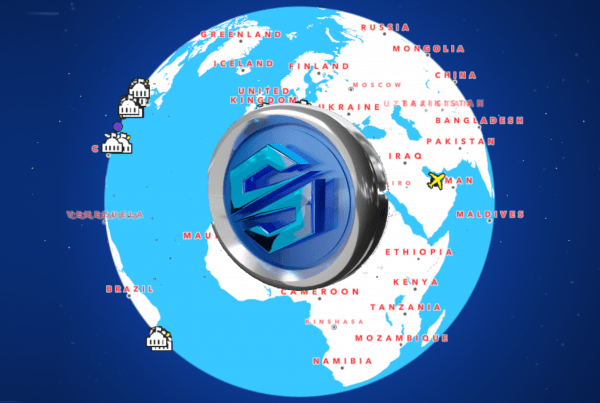
While the NFT sector is far removed from its market cap peak in 2022, NFTs are far from dead. There are more projects than ever leveraging NFT capabilities and an ever-increasing number of enterprises and artists using the proof of ownership stored on the blockchain to issue digital items.
Non-fungible tokens (NFTs) gained immense popularity since their inception in 2014, captivating artists, collectors, and investors. Recently, however, the NFT sector has experienced a significant downturn, characterized by declining sales and item prices. The once-thriving market, where staggering amounts were spent on popular NFT collectibles, now finds itself at a crossroads as brands, artists, and collectors reevaluate their participation in the NFT sector amidst a bearish crypto market sentiment.
Despite the recent downturn, proponents argue that NFTs are still a very promising subgroup of cryptocurrency. They usually emphasize the technology’s potential for democratizing the art world, empowering artists with new revenue streams, revolutionizing how we perceive ownership, and drastically changing the culture of collecting.
In this article, we delve into the current state of the NFT market, investigate potential factors that could contribute to its recovery, and seek to answer the question that is surely on every reader’s mind: “Are NFTs dead?”
The NFT Market Peaked in Q1 2022
Before delving into the decline of the NFT sector, it is important to explore the factors that contributed to the initial popularity of these tokens.
The real rise began in the latter half of 2021, when the NFT market witnessed a surge in high-profile sales. These included pieces from Beeple’s “Everyday: The First 5000 Days,” a digital artwork that fetched an astonishing $69 million, and Pak’s “The Fungible Collection,” which included the renowned “Clock” piece, which sold for $52 million. These and several other outstanding sales pushed NFTs into the mainstream spotlight and paved the way for a very successful start to 2022.
Moreover, celebrities and influencers played a crucial role in promoting NFTs and driving the initial hype. Figures like Eminem and Jimmy Fallon, for example, openly endorsed projects such as Bored Ape Yacht Club (BAYC). Simultaneously, the rise of NFT marketplaces like OpenSea and Rarible facilitated the buying and selling of NFTs, attracting seasoned collectors and newcomers alike.
All these factors caused the NFT market to post record-breaking stats in Q1 2022. Data from Dune Analytics shows that in the first quarter of 2022, NFT sales on OpenSea alone accounted for more than $4.87 billion per month. Naturally, the number of NFT sales and the number of wallets participating in NFT trading was also either very near or at ATH at that time.

Understanding the Reasons Behind the Decline of NFTs
The initial enthusiasm surrounding NFTs eventually waned, resulting in a significant downturn in the market. Several factors contributed to this decline:
- Speculation: The evolution of events showed that the surge in NFT valuations was driven largely by speculative investors rather than genuine appreciation for the art or digital assets. This led to volatile prices and increased market instability.
- A recent bull market: In November 2021, Bitcoin surged to its ATH of $ 68,770, which means that investors who liquidated their crypto holdings in Q4 2021 had plenty of money for high-risk investments or to simply splurge on luxury unnecessary items. This facilitated NFTs reaching outrageously high prices.
- Rise in scams and fraud: As the NFT market grew rapidly, so did the number of fraudulent projects. Scams and “rug pulls” eroded trust among investors and collectors, casting doubt on the legitimacy of NFTs as a whole.
- Oversaturation of the market: Eventually, the influx of numerous NFT projects flooded the market, making it difficult for investors to differentiate between valuable and less valuable assets. Oversaturation contributed to a correction in the market.
- Regulatory scrutiny: Governments worldwide were grappling with how to regulate NFTs, and the potential for increased regulations have created uncertainty among investors, dampening market sentiment.
These factors resulted in a significant downturn, resulting in a sharp decline in NFT sales in the second half of 2022. Many NFT holders incurred substantial losses during the NFT bear market. One such example is Justin Bieber, who bought a Bored Ape NFT for $1.31 million in January 2022. Today, he would be lucky to get $59,000 for his Bored Ape collectible.
Are NFTs dead? Where does the NFT market stand today?
To better understand the landscape of the NFT sector in 2023, we will analyze current trading data, explore the most popular blockchain networks utilized for NFTs and analyze the market share of different NFT marketplaces.
Monthly NFT trading volume falls below $1 billion
According to data provided by Dapp Radar, the NFT sector started 2023 with a notable rebound, as the monthly trading volume in January was $946 million (38.5% higher than the month before). This upward trend continued in February, with trading volume reaching a staggering $2 billion, marking a remarkable +111% surge compared to January.
Dapp Radar concluded that February’s surge was largely fuelled by the launch of a novel NFT marketplace called Blur, which we will talk about more in one of the following sections.
Since February, the NFT trading volume has been in decline once again. The volume quickly slipped under $1 billion. The latest figures show a slide from $740 million recorded in May to $708 million in June 2023 (another 4.3% decline compared to the previous month). On a normal day in July 2023, there were between 250,000 and 400,000 NFT transactions, accounting for a total daily trading volume between $15 and $50 million.
Ethereum blockchain dominates in terms of NFT trading volume, most NFT sales are, however, facilitated by Polygon
Ethereum blockchain remains the top choice for the majority of high-value NFT creators and buyers. Data gathered by Dapp Radar in the first half of May 2023 shows that the popular network holds a commanding 81% market share in terms of NFT trading volume. However, when it comes to the percentage of all NFT sales, Ethereum’s share decreases to just 5.7%. This suggests that Ethereum is primarily utilized for conducting large-volume sales, positioning it as the preferred platform for the “NFT aristocracy.” Data also shows that Ethereum is slowly bleeding out its market share to other blockchains emerging in the NFT market.
Solana blockchain takes the second spot, with 6.7% of the total trading volume and a 13% share in the number of NFT sales. Close behind is Polygon, with a trading volume share of 5.4% and a significant 26.9% dominance over the number of conducted NFT deals. Polygon’s high number of NFT sales can be attributed to its strategic moves to become a preferred choice for launching NFT projects with a low entry price. Additionally, Polygon has attracted numerous games with NFT mechanics, such as Planet IX, The Sandbox, and Oath of Peak, further bolstering its position in the market.
OpenSea NFT marketplace lost its long-held top spot to newcomer Blur
Since its launch in mid-October 2022, Blur has steadily gained popularity among NFT collectors and traders. However, it was in February that the marketplace experienced an explosive surge in popularity, surpassing OpenSea as the largest NFT marketplace.
The surge in Blur’s market share in February can be attributed to the airdrop event for the BLUR token. This event involved rewarding loyal Blur users with BLUR tokens, with the maximum airdrop amount reserved for those who exclusively used Blur to list their NFTs. This incentive mechanism provided a clear motivation for NFT users to choose Blur over other marketplaces like OpenSea, which lacked similar incentives. While it’s challenging to measure the exact impact of the BLUR token launch on the broader NFT market, the rise in total NFT trading volume also coincided with its introduction. This indicates that the launch of the BLUR token played a significant role in boosting Blur’s importance in the NFT ecosystem.

Is it too late to invest in NFTs?
While the market data may currently suggest a decline in the NFT sector, it is important to recognize that the developers and creators within the NFT space continue to create and innovate. Despite the current trends, the potential for new opportunities and emerging trends to surface remains. As the technology surrounding NFTs advances and adoption expands, investors may find enticing prospects in emerging projects, talented artists, or unique collectibles.
To correctly identify the next big NFT collection, it is crucial to remain attentive to the evolving landscape of NFTs, as an unforeseen opportunity may arise at any time. Therefore, even amidst a perceived decline, the dynamic nature of the NFT sector leaves room for future developments and investment potential. But as with any investment, careful research, evaluation, and consideration of personal financial goals is of paramount importance.
To put it in layman’s terms: no, you are not too late to invest in NFTs, but potentially profitable collections may be significantly harder to find today as compared to the golden era of NFTs. If you don’t want to invest in NFTs directly but still want exposure to NFTs, you can consider investing in the next cryptocurrencies to explode, many of which are focused on developing NFTs products and services.
The Bottom Line: The NFT sector is not dead
While the NFT sector has experienced a significant decline, it is important to note that it is not dead. In the latter half of 2022, the NFT trading volume suffered due to various factors, including the broader crypto market downturn. However, there was a notable resurgence in the first quarter of 2023. In February, the trading volume skyrocketed to an impressive $2 billion. It would be an exaggeration to claim that an industry generating such a substantial monthly trading volume is dead.
At the same time, it is undeniable that the current state of the NFT sector falls short of its peak popularity enjoyed in late 2021 and early 2022. But even in this harsher NFT landscape, opportunities continue to exist for those who follow the latest trends in the industry and are capable of informed decision-making. For example, there are several sports-focused NFT projects that are collaborating with sports stars, including Binance’s collaboration with Cristiano Ronaldo and Sorare’s partnership with FIFA.



